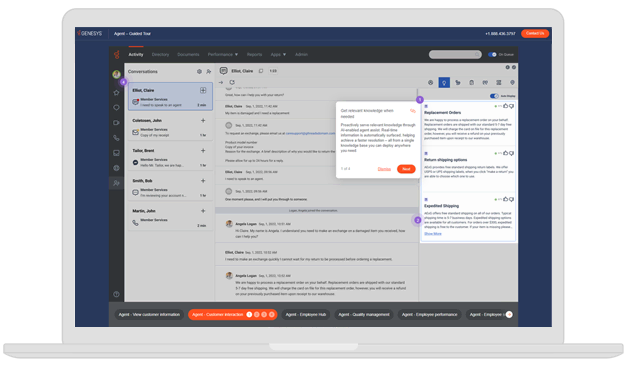Keeping the travel sector moving
SITA helps 2,800 airlines, airports and government agencies deliver hassle-free passenger journeys — from check-in and security to boarding and baggage tracking. Eight service centers, with 400 agents who handle calls from more than 150 countries, support these critical services.
Advances in technology, such as the Internet of Things and ever-faster cellular speeds, continue to lower barriers to entry and disrupt IT service provider models. To stay ahead, SITA elevated its customer experience with technology innovation. Rather than continue to invest heavily in on-premises systems, the company moved to a cloud-based contact center model that offers more agility and omnichannel features.
Voice migration for 150 countries in five minutes
SITA chose the Genesys Cloud platform for ease of use and high availability, enabling calls to be collected worldwide transiting through their regional point-of-presence — from Montreal, London and Singapore — with IT operations managed centrally from a 24/7 SITA command center. The company also wanted to make service easier for customers with new options like email and chat. Integration with existing SIP trunks, voice gateways, phones and web portals was another major consideration.
“To get our old system to support digital channels with the same level of integration that we have with Genesys Cloud, we would have needed to spend another $2 million, plus huge amounts of engineering man hours,” said Vichaig Douangpaseuth, Senior Manager, Service Improvement SDN Network and Voice Practice at SITA. “The changeover was remarkably simple. It only took us five minutes to switch SIP traffic from 160 numbers and 150 countries — resulting in improved call quality.”
Creating new possibilities for service innovation
While it’s still in the early days, SITA is excited by the initial results. The Genesys Cloud platform gives SITA the perfect blend: a follow-the-sun model with seamless handovers between its main SITA command center in Singapore and Montreal, along with nonstop contact center service for 24/7 service desks in multiple geographic locations.
“It’s very easy to spin up virtual teams or re-route traffic between sites, so we’re in a much better place when it comes to capacity planning and disaster recovery,” said Douangpaseuth.





